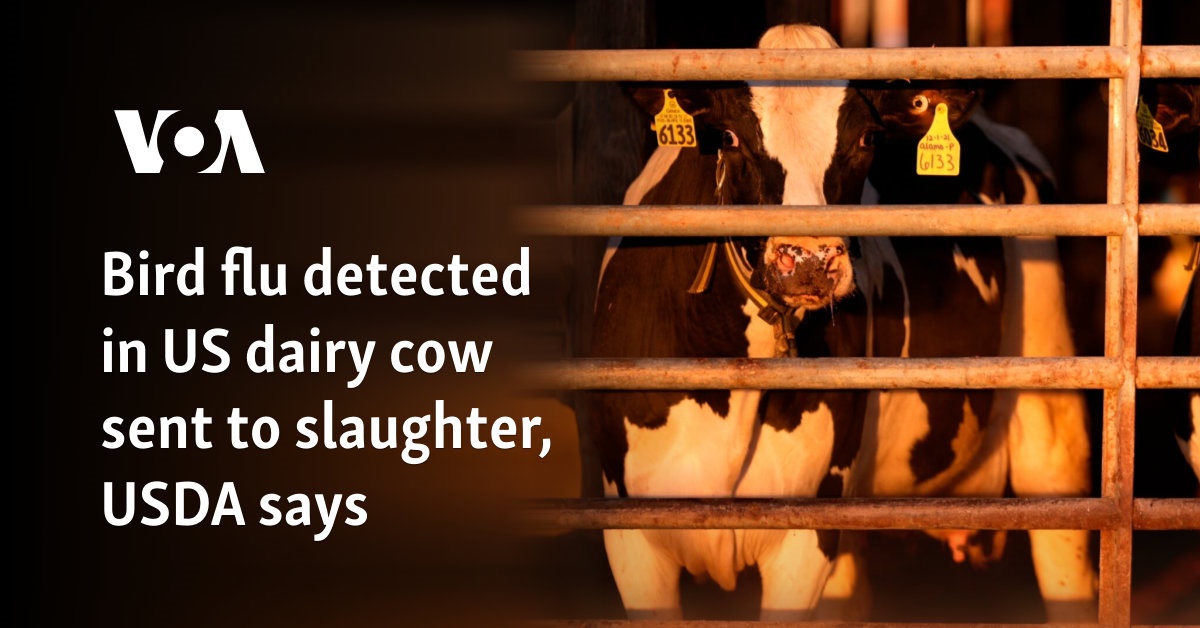
This article was originally published on VOA News - Science. You can read the original article HERE

Bird flu virus particles were found in tissue samples taken from one dairy cow sent to slaughter at a U.S. meat processing plant, but none were detected in samples from 95 other cattle, the U.S. Department of Agriculture said on Friday.
Meat from the animals was prevented from entering the nation's food supply, the USDA said.
Agriculture and health officials have scaled up testing of meat, dairy products and livestock as an outbreak of bird flu has expanded in dairy cattle.
Two U.S. dairy workers have tested positive for bird flu since the virus was first detected in cattle in late March.
Older dairy cows are often processed for hamburger. The USDA's testing results come at the start of peak U.S. grilling season around the U.S. Memorial Day weekend.
To date, the USDA said it has completed testing on beef tissue from 96 of 109 muscle samples that were collected as part of a meat safety study.
The agency said it collected tissue samples at slaughter facilities from dairy cattle that were condemned for systemic diseases and then analyzed them using PCR testing. The testing does not differentiate between a live virus or fragments, the USDA said.
The U.S. Food and Drug Administration previously said it found viral particles in pasteurized milk samples from retail stores, but they did not contain live virus. The FDA has warned against consuming raw, unpasteurized milk.
USDA personnel identified signs of illness in the positive cow during a routine post-mortem inspection and prevented its meat from entering the food supply, according to the USDA.
"These actions provide further confidence that the food safety system we have in place is working," the agency said.
The USDA has confirmed bird flu in 58 dairy herds across nine states.
It previously reported that no viral particles were found in samples of ground beef collected at retail stores, and that no bird flu virus was found after cooking ground beef to medium or more after it was injected with a virus surrogate as part of an experiment.
This article was originally published by VOA News - Science. We only curate news from sources that align with the core values of our intended conservative audience. If you like the news you read here we encourage you to utilize the original sources for even more great news and opinions you can trust!










Comments